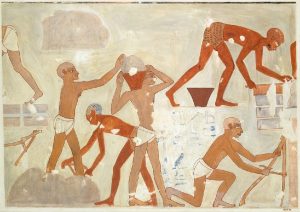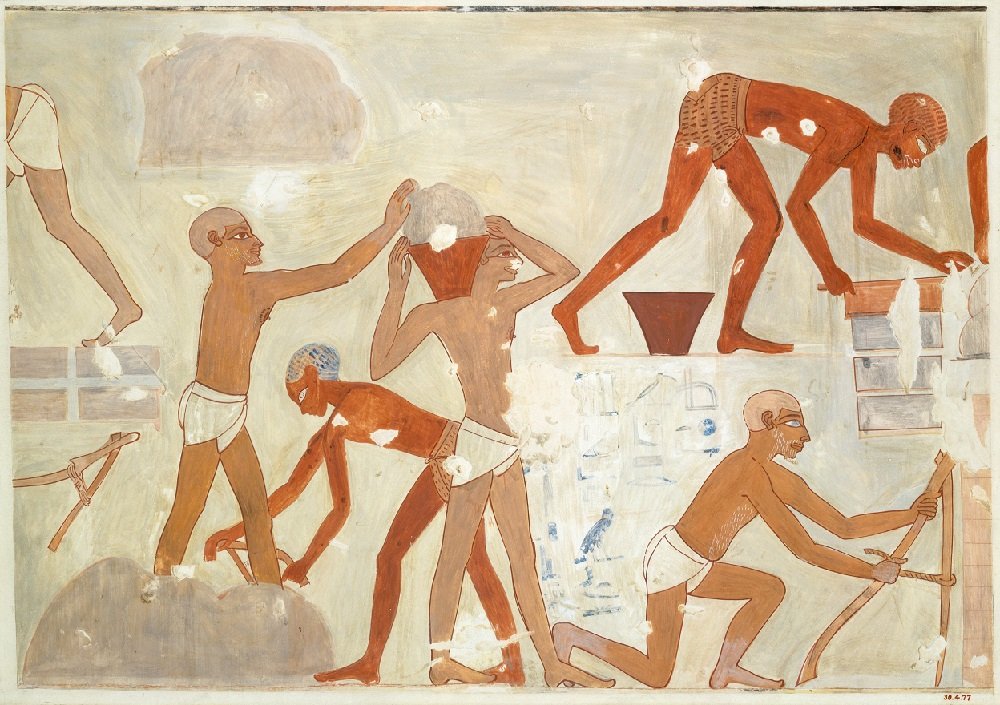This is an archive of prayers, songs, and other individual works relevant to the fifth course of the seder for Pesaḥ (Passover): Magid, the core of the Haggadah containing its midrash aggadah. Click here to contribute a work or a transcription and translation of a historical work that you have prepared for Magid in the Seder Pesaḥ. Filter resources by Collaborator Name Filter resources by Tag Filter resources by Category Filter resources by Language Filter resources by Date Range
A millennium-old tradition, recorded by Rav Sherira Gaon in 10th-century Iraq. He would always have three cooked foods on the seder plate. The egg, a product of the birds of the sky, a sign of renewal and rebirth, represented Moses, the law, the heavens, and the revelational aspects of faith. The shankbone, a product of the animals of the field, a commemoration of the original Pesaḥ sacrifice, represented Aaron, the priesthood, the earth, and the ritual aspects of faith. And the fish, representing the constant flowing nature of water, represented Miriam, prophecy, the waters, and the spiritual aspects of faith. . . . Categories: Tags: Contributor(s): A series of ten short couplets describing the ten plagues afflicting the Egyptians in Egypt, written in Judeo-Italian and first published in the famous 1609 Venice Haggadah of Isaac Gershon. The Italian used in the Venice Haggadah lacks a lot of the most divergent aspects of the Judeo-Italian languages, sticking to a more mainline Tuscan grammatical norm, but there are enough obsolete, poetic, or dialectal forms that several footnotes have been included to explain them. Also included is an original English-language rhyming translation! . . . Categories: Tags: Contributor(s): We are hereby ready to fulfill our obligation of K’vod Habriot, respect for the dignity of every human being. We pray that our fellow citizens shall not be the source of suffering in others. We commit ourselves to raise our voices in support of universal human rights, to know the heart of the stranger, and to feel compassion for those whose humanity is denied. May our compassion lead us to fight for justice. Blessed is the Source of Life, who redeemed our ancestors from Egypt and brought us together this night of Passover to tell the story of freedom. May God bring us security and peace, enabling us to celebrate together year after year. Praised are you, Source of Righteousness, who redeems the world and loves justice and freedom. . . . Categories: Tags: Contributor(s): Traditionally each cup in the Passover Seder is liked to a promise made by God in these verses, Exodus 6:6-7. The four cups can also be associated with the Four Freedoms first articulated by US President Franklin D. Roosevelt on January 6, 1941, which were an inspiration for the Universal Declaration of Human Rights and were explicitly incorporated into its preamble. . . . Categories: Tags: Contributor(s): A meditation which can be used to prepare for Pesaḥ, or for sharing at the Seder, to deepen the experience of liberation for yourself and others. . . . Categories: Tags: Contributor(s): A prayer for the Passover seder recognizing the enslavement and estrangement of Jews and Israelites of African descent with hope for their ingathering. . . . Categories: Tags: Contributor(s): According to Mishnah Pesaḥim 10:4, “One expounds (doresh) from ‘A wandering Aramean was my father’ (Deuteronomy 26:5) until he finishes the whole story.” This supplement to Maggid, the verse Deuteronomy 26:9 and its midrash, fulfills the obligation. The verse and its midrash fit into the Passover Haggadah after the ten plagues and the midrash on them, right before the song Dayyenu. . . . Categories: Tags: Contributor(s): An old Persian tradition involves hitting each other with leeks during the recitation of Dayenu. Nowadays this is replaced with a gentle tap with a scallion for safety reasons. . . . Categories: Tags: Contributor(s): “The Fifth Child: The Refugee Child” was written by Rabbi Julie Schonfeld for a Passover Seder Haggadah supplement published by Jewish Democratic Women for Action (Passover 2022). . . . Categories: Tags: Contributor(s): A prayer-poem was written by Kohenet Ilana Joy Streit in January 2024. . . . Categories: Tags: Contributor(s): “All Four (Are One),” riffing on the story in the haggadah of the four children, is a prayer-poem on the theme of intracommunal discord six months after October 7th (possibly reflected in the family dynamics at the seder table itself). Written by Rabbi Rachel Barenblat, it was first published on the website of Bayit: Building Jewish on 2 April 2024. . . . Categories: Tags: Contributor(s): This variation on the discourse of the four children in the Haggadah was (barring minor edits) first composed for my family’s experimental small-scale seder in 2019, my second time ever leading a seder. I had come to the conclusion that for a text whose entire ikkar is for the children to learn, the Four Children narrative shows some shockingly bad pedagogy. So I decided to write a subversive take on it, where I applied its framework to some of the most serious problems facing the Jewish community today, and the mainline Jewish community’s failings in dealing with them. . . . Categories: Tags: Contributor(s): This prayer for the well-being of the captives taken hostage by ḤAMA”S and its allies on 7 October 2023 was written by the Ashkenazi chief rabbi of the State of Israel, David Lau, and shared by his office in the month preceding Pesaḥ 2024. The prayer is intended to be read at the Passover seder in the Maggid section before והיא שעמדה (v’hi she’amda). . . . Categories: Tags: Contributor(s): |



